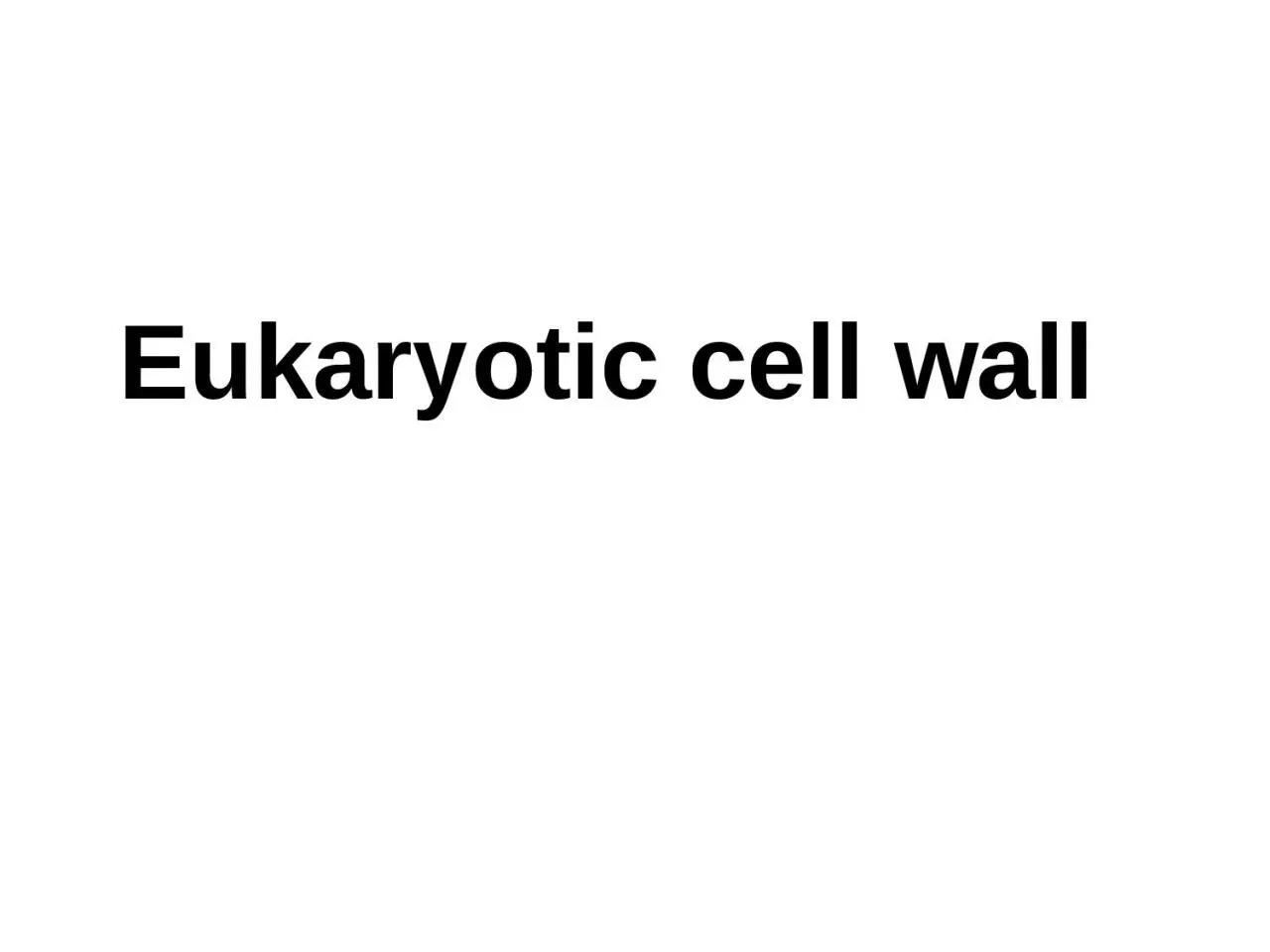

A cell wall is defined as the nonliving component covering the outmost layer of a cell Its composition varies according to the organism and is permeable in nature The cell wall separates the interior contents of the cell from the exterior environment It also provides shape support and protect ID: 1022011
Download Presentation The PPT/PDF document "Eukaryotic cell wall A cell wall is defi..." is the property of its rightful owner. Permission is granted to download and print the materials on this web site for personal, non-commercial use only, and to display it on your personal computer provided you do not modify the materials and that you retain all copyright notices contained in the materials. By downloading content from our website, you accept the terms of this agreement.
1. Eukaryotic cell wall
2. A cell wall is defined as the non-living component, covering the outmost layer of a cell. Its composition varies according to the organism and is permeable in nature. The cell wall separates the interior contents of the cell from the exterior environment. It also provides shape, support, and protection to the cell and its organelles. However, this cellular component is present exclusively in eukaryotic plants, fungi, and few prokaryotic organisms.
3. A cell wall is defined as the non-living component, covering the outmost layer of a cell. Its composition varies according to the organism and is permeable in nature. The cell wall separates the interior contents of the cell from the exterior environment. It also provides shape, support, and protection to the cell and its organelles. However, this cellular component is present exclusively in eukaryotic plants, fungi, and few prokaryotic organisms. As stated above, fungi also possess cell walls, but they are made up of chitin, a derivative of glucose which is also found in the exoskeletons of arthropods. And just like the cell walls in plants, they provide structural support and prevents desiccation
4. Function of the Cell Wall- The cell wall is an integral component of the plant cell and it performs many essential functions. Following are some of the major cell wall functions observed:The plant cell wall provides definite shape, strength, rigidityIt also provides protection against mechanical stress and physical shocksIt helps to control cell expansion due to the intake of waterAlso helps in preventing water loss from the cellIt is responsible for transporting substances between and across the cellIt acts as a barrier between the interior cellular components and the external environmentProtecting the cell against physical damage and invading pathogens.Regulates and controls the direction of cell growth.Providing the strength, structural support and maintaining the shape of the cell.Functions as a storage unit by storing carbohydrates for use in plant growth, especially in seeds.It allows entry of smaller molecules through it freely.
5. Composition of cell wall- The cell wall is mainly composed of carbohydrate rich materials like hemicelluloses and cellulose, pectins, and proteins While in case of algae it contain galactans, mannas and CaCO3. Chemical compositiona. Matrix- 60% of water, 1-2% protein, Hemicullulose 5-15%, Pectin substances 2-8% b. Micrifibril- Fungus cellulose 10-15%c. Other ingrediants- Lignin, cutin, suberin, silica, minerals, CaCO3, waxes, tanines and gum
6. Cell Wall Structure- The cell wall is the outer covering of a cell, present adjacent to the cell membrane, which is also called the plasma membrane. As mentioned earlier, the cell wall is present in all plant cells, fungi, bacteria, algae, and some archaea. An animal cell is irregular in their shape and this is mainly due to the lack of cell wall in their cells. The compositions of the cell wall usually vary along with organisms. The plant cell wall is generally arranged in 3 layers and composed of carbohydrate, like pectin, cellulose, hemicellulose and other smaller amounts of minerals, which form a network along with structural proteins to form the cell wall. The three major layers are:The Middle LamellaPrimary Cell WallThe Secondary Cell Wall
7. Middle Lamella The middle lamella is also the outermost layer and it acts as an interface between the other neighbouring cells and glues them together. This layer primarily consists of pectins. However, other substances such as lignin and proteins can also be found. It just like the brich in common wall between two adjacent cells.Iit is mainly composed of Ca and Mg.
8.
9. 2. Primary Cell WallThe primary cell is situated closest to the inside of the cell and is the first-formed cell wall. It is mainly made up of cellulose, allowing the wall to stretch for the purpose of growth. Several primary cells contain pectic polysaccharides and structural proteins. It is also comparatively permeable and thinner than the other layers.
10.
11.
12.
13.
14.
15.
16.
17.
18.
19.
20.
21.
22.
23.
24.
25.
26.
27.
28.
29.
30.
31.
32.
33.
34.